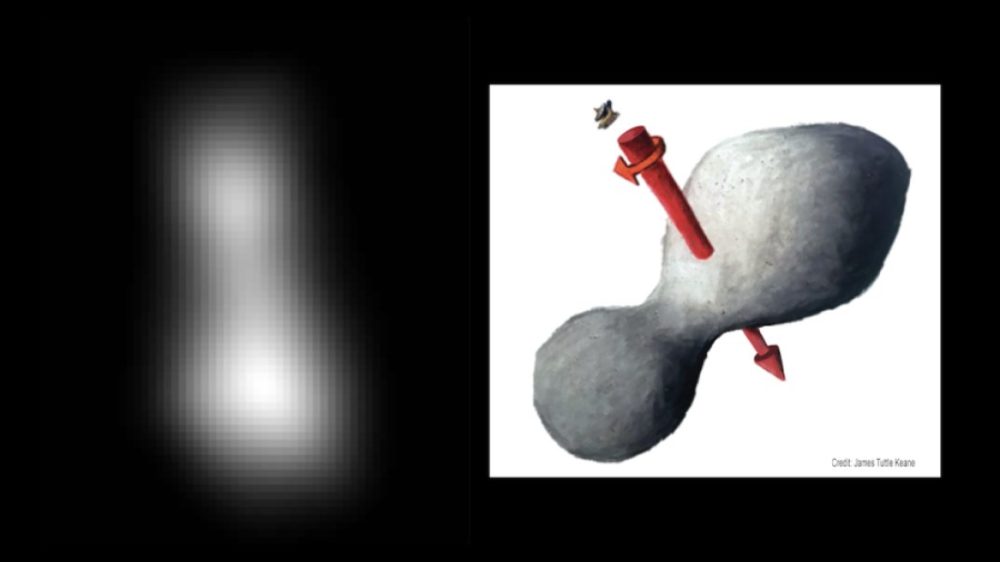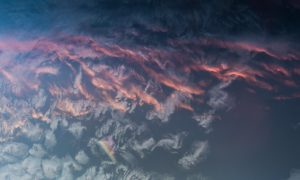Finally, tellurian marked a fantastic start of a new year on the Solar system when NASA’s New Horizons spacecraft flew farthest to 4 billion miles from Earth. NASA received confirmation on Tuesday that its New Horizons encounter with Ultima Thule. Nicknamed as the 2014 MU69, Ultima Thule is a rocky relic from the solar system’s infancy whose name means “beyond the borders of the known world.”
According to NASA, Ultima Thule is the most distant, most primitive objects that humans have ever seen and ever visited by a spacecraft. A composite of two pictures was taken by New Horizons’ high-resolution Long-Range Reconnaissance Imager (LRRI) as the spacecraft approached Ultima Thule. Scientists say Ultima Thule appears to be shaped like a bowling pin or it could be two objects orbiting each other. At 12:33 a.m. ET on January 1, NASA’s New Horizons probe flew by a small lump of rock and ice called Kuiper Belt, (a doughnut-shaped region of icy bodies beyond the orbit of Neptune).
Related: Why is the Sun’s corona so hot?
Due to the vast distance messages must travel between Earth and the spacecraft, members of the New Horizons team did not immediately know for sure whether the flyby was successful. But just after 10:30 a.m., as plush of the Disney dog Pluto watched over them, the confirmation signal came in, and the teams in charge of each New Horizons subsystem started reporting back. We have a healthy spacecraft. We’ve just accomplished the most distant flyby,” mission operations manager Alice Bowman said with a smile.
Related: The Three Ways The Universe Might End
I’m just a planetary scientist, and in a planetary event, wild horses can’t drag you away,” says Jim Green, the head of NASA’s planetary science division. “It’s all about the discovery here; it’s all about something that’s never been seen before.”
New Horizons, launched toward the solar system’s outskirts on January 19, 2006, was the first mission dedicated to exploring the outermost edges of the solar system. In 2015, it captures the first close-up images of Pluto, revealing a complex and colourful world mottled with methane mountains and a vast, heart-shaped nitrogen ice plain. Both Pluto and Ultima Thule (2014 MU69) lies in kuiper Belt.
Related: The 2019 Spaceflight Events You Don’t want to miss
Even with a boost from the mighty planet’s gravity, it took more than two billion more miles for the craft to get to Pluto. But at last, on July 14, 2015, New Horizons revealed the king of the Kuiper belt and its retinue of moons in spectacular fashion.
Now, after making history at the Pluto system, New Horizons has become the first spacecraft ever to visit an object discovered after said spacecraft launched. As the probe sailed toward its main target in 2014, astronomers used the Hubble Space Telescope to find 2014 MU69, a dim object that orbits the sun every 297 Earth-years on a near-circular orbit. We didn’t know about this thing, [and] that makes it so crazy,” says Marc Buie, the astronomer who discovered MU69.
Credit: NASA/JHUAPL/SwRI; sketch courtesy of James Tuttle Keane
Source: Science Daily



























